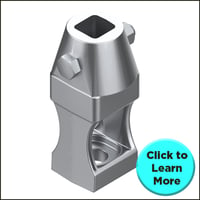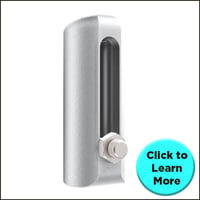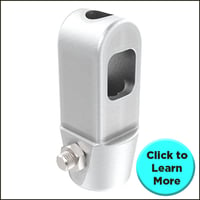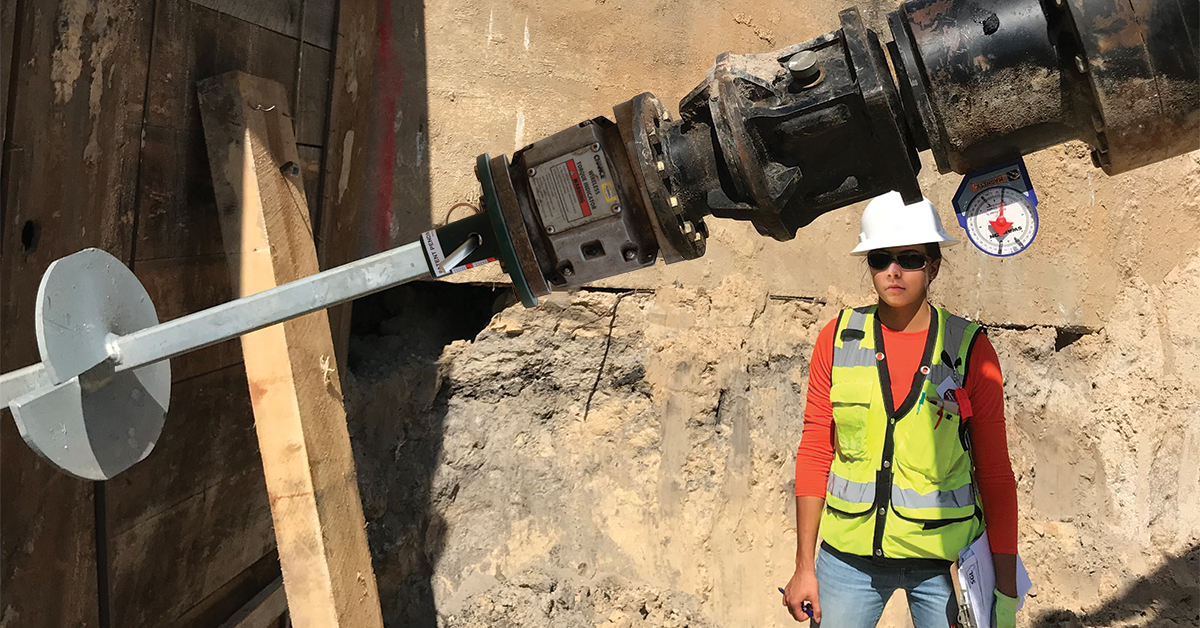Chance helical tieback anchors provide lateral support in soil retention applications including both permanent and temporary sheet pile walls, marine bulkheads, concrete reinforced walls, precast concrete panel walls, and more. They have been used in multi-tier tieback walls to heights of 50 feet.
Tiebacks are an addition to a soil retaining system. Active earth pressure is the force applied to the wall by the soil behind the retaining wall which tends to “push” the wall outward. Passive earth pressure is the compressing of soil on the front side of the wall between the toe and grade (bottom of wall). Secondary pressures on a retaining wall are exerted by surcharge loads applied at the top of the back side of the wall. These can be dead or live loads that will continuously load the soil mass behind the retaining wall further adding to the active earth pressure exerted. The active earth pressure, surcharge loads, and passive earth pressure create a point of rotation within the retaining wall. This point of rotation is typically at or slightly below grade level of the front of the wall.
A helical tieback is installed by screwing the anchor into the soil behind the retaining wall until the helix plates are beyond the failure plane into stable soil that can bear load. Load bearing soil may include stiff clays, dense sands, and residual soils above bedrock. An important note is square shaft helical tiebacks are the most efficient screw anchor system to transfer tension capacity which makes them ideal for tiebacks. Pipe shaft helical tiebacks can be used but typically are not recommended due to loss in installation efficiency and increased material cost.
Helical anchors offer stabilization with many installation advantages. To make tieback anchor installation even easier and more affordable, Chance developed the Universal Adapter. There are configurations designed to work with 1-1/2” and 1-3/4” square shaft anchors, drivable and not drivable.



| Catalog No. |
Product Series |
Ultimate Capacity (tension) |
Drivable |
| C1502189 |
SS5/SS150 |
70 kip |
Yes |
| C1502241 |
SS175 |
100 kip |
No |
| C1502242 |
SS175 |
100 kip |
Yes |
Providing additional installation efficiency, Chance Universal Adapters are easier to install and more affordable than drilled & tapped adapters or threaded stud adapters. The adapter connects the square shaft helical tieback anchor to any 1” diameter continuous thread bar or all-thread. Other adapters must be drilled and tapped to fit a particular brand bar and thread form but this universal system gives the contractor freedom to choose any 1” bar.
The Universal Adapter comes with or without a countersink feature. With the countersink feature, it can be connected to the helical tieback anchor on the outside of the wall and then the installation is continued until the Adapter is advanced behind the wall face. This eliminates the need for personnel or equipment to get behind the retaining wall to finish the installation and satisfies OSHA requirements.
Here’s a quick guide to installing tieback anchors using a Chance Universal Adapter:
- Once required torque is reached with the square shaft tieback anchor, simply insert the bolt through the Universal Adapter and the last extension section and tighten the provided nut.
- Next attach your preferred brand of thread bar to the other end of the adapter. The Universal Adapter accommodates any thread bar with a 1-inch diameter.
- After the Universal Thread Bar adapter has connected the tieback anchor to the all thread, an easily-fabricated 4-inch square tube drive tool is attached to the tooling string.
A Chance Square Shaft tieback anchor provides the lowest cost per kip at load ranges of 50 kips or less due to their high torque efficiency and low material cost.
Unlike grouted tiebacks, square shaft anchors can be installed with small construction equipment in limited access sites and do not cause vibration that may damage adjacent structures. Additional advantages include:
- Helical anchors transfer load to the load bearing soil by end bearing on the helical plates, not skin friction, so you can use less steel to obtain the same capacity.
- No belled and/or long length grouted bond zones required.
- Anchors transfer load to soil by end bearing, not skin friction, which shortens their length.
- No de-watering for below water-table applications
- Installs in any weather or limited access area
- No drilling or spoils to remove
- Permanent or temporary (removable)
To learn more about using Chance tieback anchors for simple and reliable wall stabilization, contact your local distributor.

